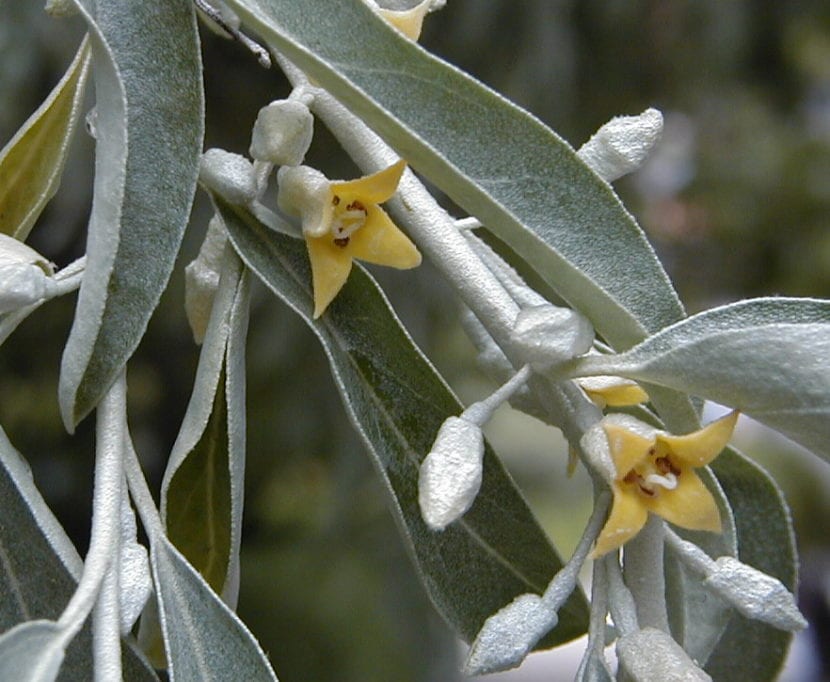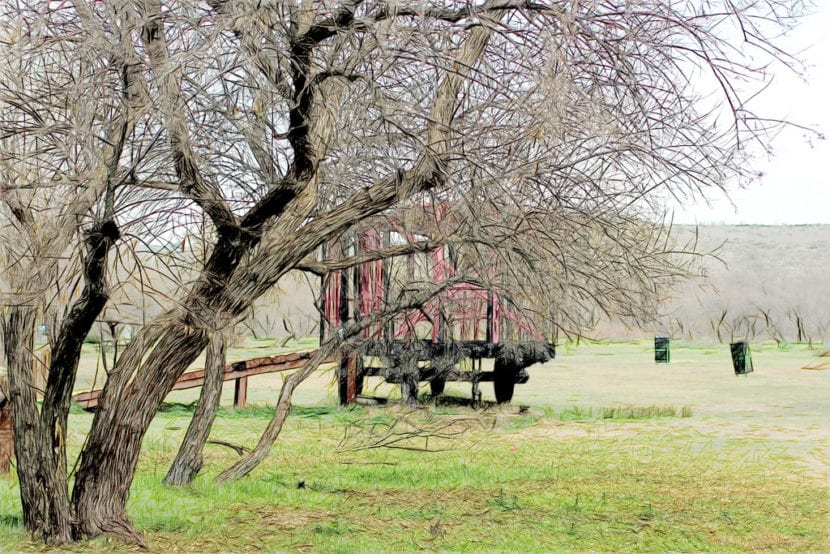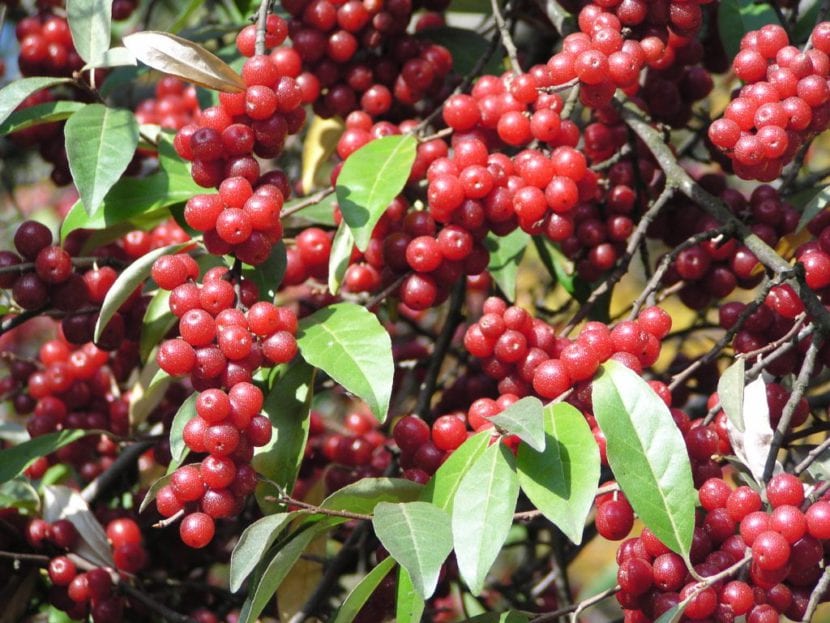
There are few plants that can be had both as a tree and as a shrub: the eleagnus is one of them. Especially native to Asia, it is a plant that tolerates pruning so well that you can even have it in a pot throughout its life. In addition, it does not require special care, making it ideal for low or no maintenance gardens.
Let us know more about this extraordinary plant.
What is the Eleagnus like?

The Eleagnus is a botanical genus that comprises more than 90 species of evergreen or deciduous trees or shrubs. They are characterized by having leaves covered by small silver-colored scales, which makes that if you see them from afar, they appear to be white. It has very small, fragrant flowers, appearing during the spring, after the last frosts have passed. The fruit, which ripens in autumn, is a drupe that contains a single seed.
It must be said that there are many species that are edible, including the E. angustifolia that you can see in the image above, and the E. umbellata. So now you know, if you are hungry when you are in the garden, you just have to plant one of them to be able to savor them and it calms the stomach. And they look very good, look:

Care guide
Now that we know what it is like, let's see how to take care of it so that we can enjoy it for many years.
- Location: It is recommended to place it in an area where it gets maximum sunlight.
- Ground: It is not demanding with the soil, but if it is in a pot it is convenient to use universal substrate for plants mixed with 20% perlite.
- Irrigation: regular, between 2 and 3 times a week in summer, and every 5-6 days the rest of the year avoiding waterlogging.
- Transplant: whether you want to move to a larger pot or to the ground, you have to do it in spring.
- Pruning: Prune in late winter or after flowering, removing weak, diseased, or overgrown branches.
- Pests: it is usually attacked by aphids and mealybugs. To avoid this, it is advisable to do preventive treatments with Neem oil, garlic infusions or paraffin oil.
What did you think of the Eleagnus?